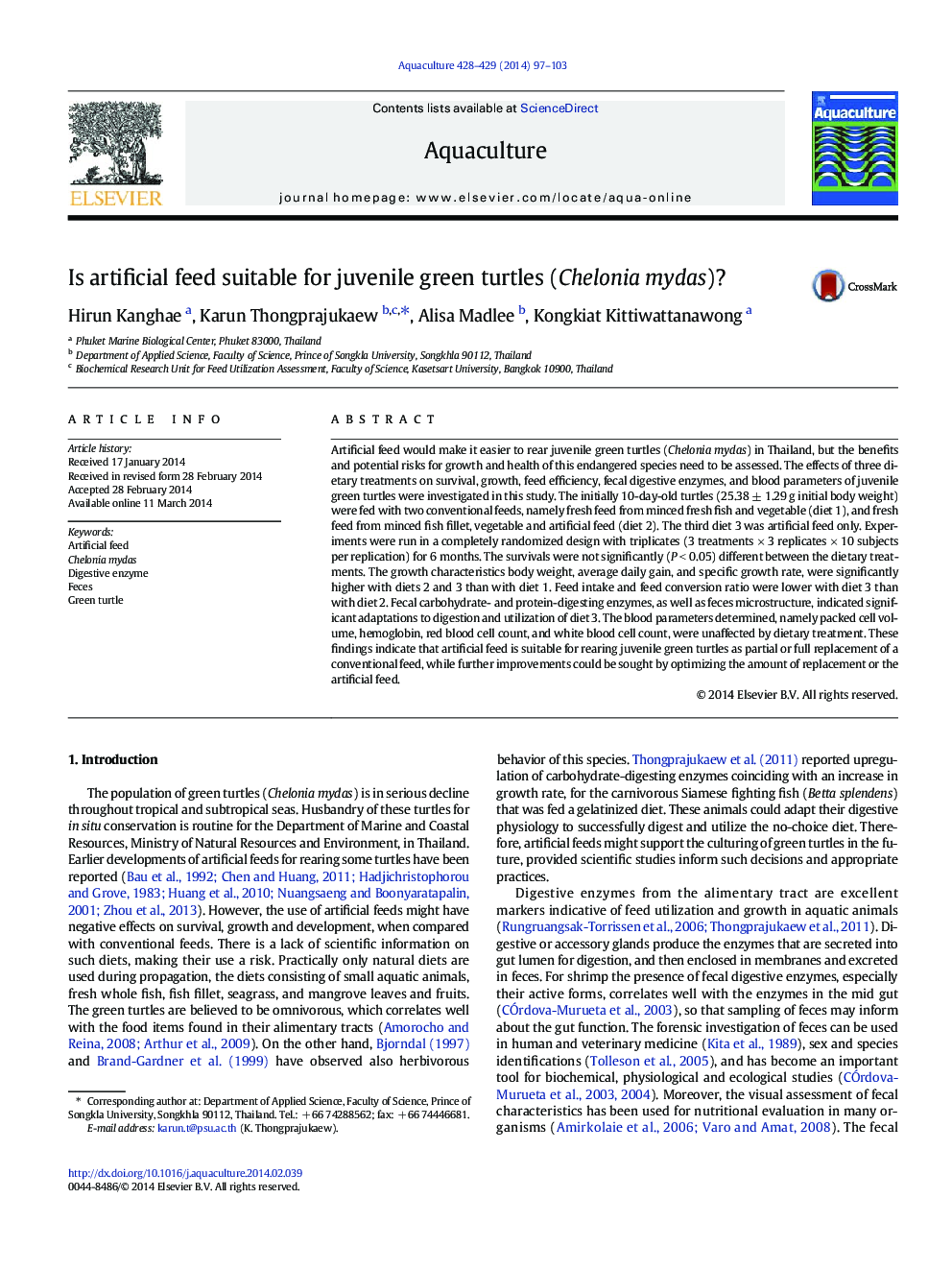| Article ID | Journal | Published Year | Pages | File Type |
|---|---|---|---|---|
| 8495060 | Aquaculture | 2014 | 7 Pages |
Abstract
Artificial feed would make it easier to rear juvenile green turtles (Chelonia mydas) in Thailand, but the benefits and potential risks for growth and health of this endangered species need to be assessed. The effects of three dietary treatments on survival, growth, feed efficiency, fecal digestive enzymes, and blood parameters of juvenile green turtles were investigated in this study. The initially 10-day-old turtles (25.38 ± 1.29 g initial body weight) were fed with two conventional feeds, namely fresh feed from minced fresh fish and vegetable (diet 1), and fresh feed from minced fish fillet, vegetable and artificial feed (diet 2). The third diet 3 was artificial feed only. Experiments were run in a completely randomized design with triplicates (3 treatments Ã 3 replicates Ã 10 subjects per replication) for 6 months. The survivals were not significantly (P < 0.05) different between the dietary treatments. The growth characteristics body weight, average daily gain, and specific growth rate, were significantly higher with diets 2 and 3 than with diet 1. Feed intake and feed conversion ratio were lower with diet 3 than with diet 2. Fecal carbohydrate- and protein-digesting enzymes, as well as feces microstructure, indicated significant adaptations to digestion and utilization of diet 3. The blood parameters determined, namely packed cell volume, hemoglobin, red blood cell count, and white blood cell count, were unaffected by dietary treatment. These findings indicate that artificial feed is suitable for rearing juvenile green turtles as partial or full replacement of a conventional feed, while further improvements could be sought by optimizing the amount of replacement or the artificial feed.
Related Topics
Life Sciences
Agricultural and Biological Sciences
Aquatic Science
Authors
Hirun Kanghae, Karun Thongprajukaew, Alisa Madlee, Kongkiat Kittiwattanawong,
